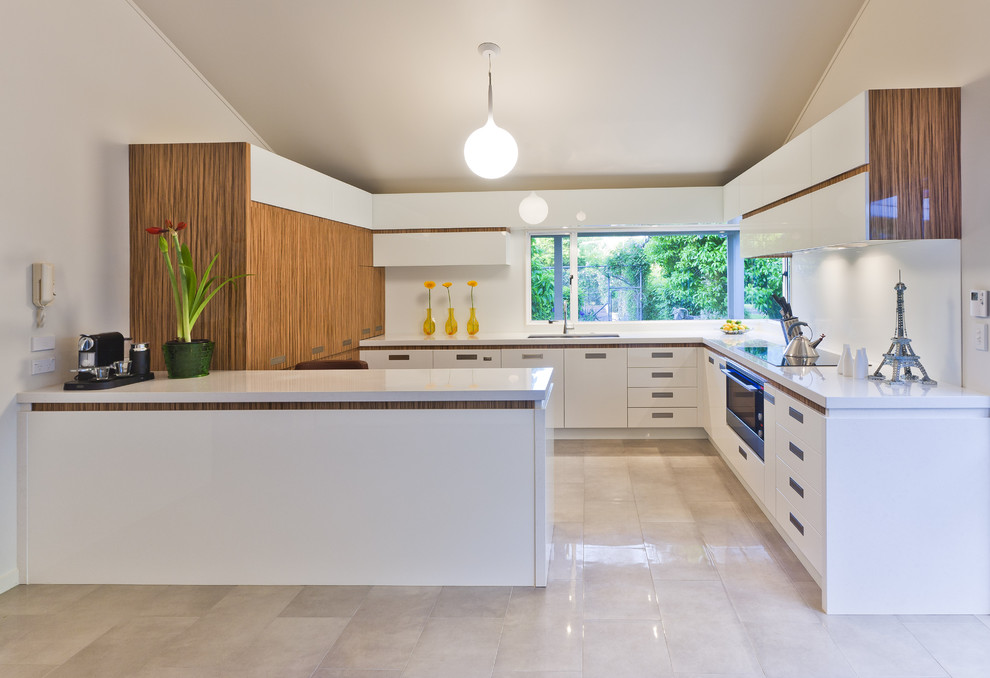Why Order Matters in a Home Remodel
Remodeling a home is an exciting process, but it comes with many decisions—especially when it comes to timing. One of the most common questions homeowners ask is, “Should I remodel the kitchen or the floor first?” It might seem like a small detail, but the order you choose can save time, money, and effort in the long run.
This blog will help you understand the pros and cons of both options, explore best practices, and offer advice from remodeling professionals. Whether you’re updating an old space or planning a full kitchen makeover, this guide will help you make the right decision.
Understanding the Remodeling Sequence
Remodeling projects often overlap, but certain tasks should come before others. It’s important to plan the right sequence of work so you can avoid damage, delays, or unnecessary rework.
In general, structural or layout changes (like moving walls or cabinets) should come first, followed by finishes like flooring or paint. That’s why the debate of kitchen vs. floor first is more important than many realize.
Remodeling the Kitchen First—Pros and Considerations
If you’re planning a full kitchen renovation—replacing cabinets, changing plumbing, or installing new appliances—it may make sense to start with the kitchen.
Benefits of Remodeling the Kitchen First:
- Less Damage to New Flooring: Kitchen remodeling involves a lot of heavy lifting, tools, and materials. If you install the floor first, it could get scratched or stained during construction.
- Cabinet Installation Comes First: New cabinets are often set on top of the subfloor (not the finished floor). Doing the flooring after can give a cleaner edge and save material.
- Better Fit for Appliances and Islands: If you’re installing new kitchen features like an island or built-in appliances, it’s easier to adjust floor heights after these elements are in place.
However, if you’re only doing light cosmetic work—like updating countertops or hardware—it may be safe to install the flooring first.
Installing the Flooring First—When Does It Make Sense?
Sometimes, putting in new flooring before kitchen updates can actually work better, especially in lighter remodels.
When Flooring First Works Best:
- You’re Only Upgrading the Floor: If your kitchen cabinets and layout will stay the same, flooring first is efficient.
- Floating Floors Are Being Installed: Some types of flooring, like laminate or floating hardwood, are not nailed down and need to be installed before cabinets.
- You Want a Seamless Floor: Installing floors throughout your home—including under the kitchen—can create a consistent look, especially in open-concept spaces.
Just remember to cover and protect the floor if any kitchen remodeling will still take place after.
Flooring Options That Impact the Order
Your choice of flooring material can also influence the remodeling sequence. Some flooring types are more durable and can handle remodeling activity, while others are more sensitive.
Common Options and Considerations:
- Hardwood Flooring: Can be damaged by tools, so often best installed last.
- Tile: Very durable, but heavy and messy to install. Can go before or after kitchen work depending on the remodel.
- Luxury Vinyl Plank (LVP): Often installed after cabinets, as it’s a floating floor.
- Laminate Flooring: Usually installed after cabinets to avoid buckling or shifting.
Choosing the right flooring for your kitchen remodeling plan ensures both durability and aesthetics.
What Professionals Recommend
Most contractors recommend doing kitchen remodeling first, especially when it involves major structural changes. This allows for better protection of your new flooring and helps everything fit properly.
Here’s what local remodeling experts suggest:
- If you’re replacing cabinets, remodel the kitchen first.
- If you’re only resurfacing or painting cabinets, flooring can come first.
- If your layout isn’t changing, flooring first might be fine, but protect it during construction.
Proper planning is key. Talk to your contractor about your goals, flooring type, and kitchen design to build a timeline that makes sense for your home.
Final Verdict—Kitchen or Floor First?
There’s no one-size-fits-all answer, but here’s a summary to help guide you:
| Situation | Go With This First |
|---|---|
| Full kitchen remodeling | Kitchen remodeling |
| New cabinets and appliances | Kitchen remodeling |
| Light kitchen updates only | Flooring |
| Floating floor installation | Flooring |
| Seamless flooring look throughout | Flooring |
| Structural changes or plumbing work | Kitchen remodeling |
The safest route? Consult with a kitchen remodeling expert who can assess your space and recommend the ideal sequence based on your materials, layout, and budget.
Conclusion
Remodeling your kitchen and flooring is a big investment—and choosing the right order is a crucial part of your success. In most cases, kitchen remodeling should come first, especially if your renovation involves layout changes, new cabinets, or plumbing adjustments.
However, there are times when flooring first is the smarter move, especially with floating floor materials or minimal kitchen updates.
Take the time to plan your project with professionals, and you’ll end up with a kitchen that looks beautiful and lasts for years.
FAQs
1. Can I install flooring under kitchen cabinets?
Usually, no. Most flooring—especially floating floors—should not go under heavy cabinetry because it can cause shifting or buckling.
2. Should I remodel the kitchen or floors first in an open-concept home?
For open layouts, flooring first may help create a seamless design, but make sure it’s well-protected if kitchen work follows.
3. What happens if I remodel the floor first and then damage it during kitchen work?
You may need repairs or replacements. This is why many experts recommend saving flooring until the end.
4. Does the type of flooring affect the remodeling timeline?
Yes. Durable options like tile can go in early, while softer materials like hardwood should be installed last.
5. How do I protect new flooring during a kitchen remodel?
Use thick drop cloths, cardboard, or hardboard sheets to cover and protect the surface from scratches and spills.
